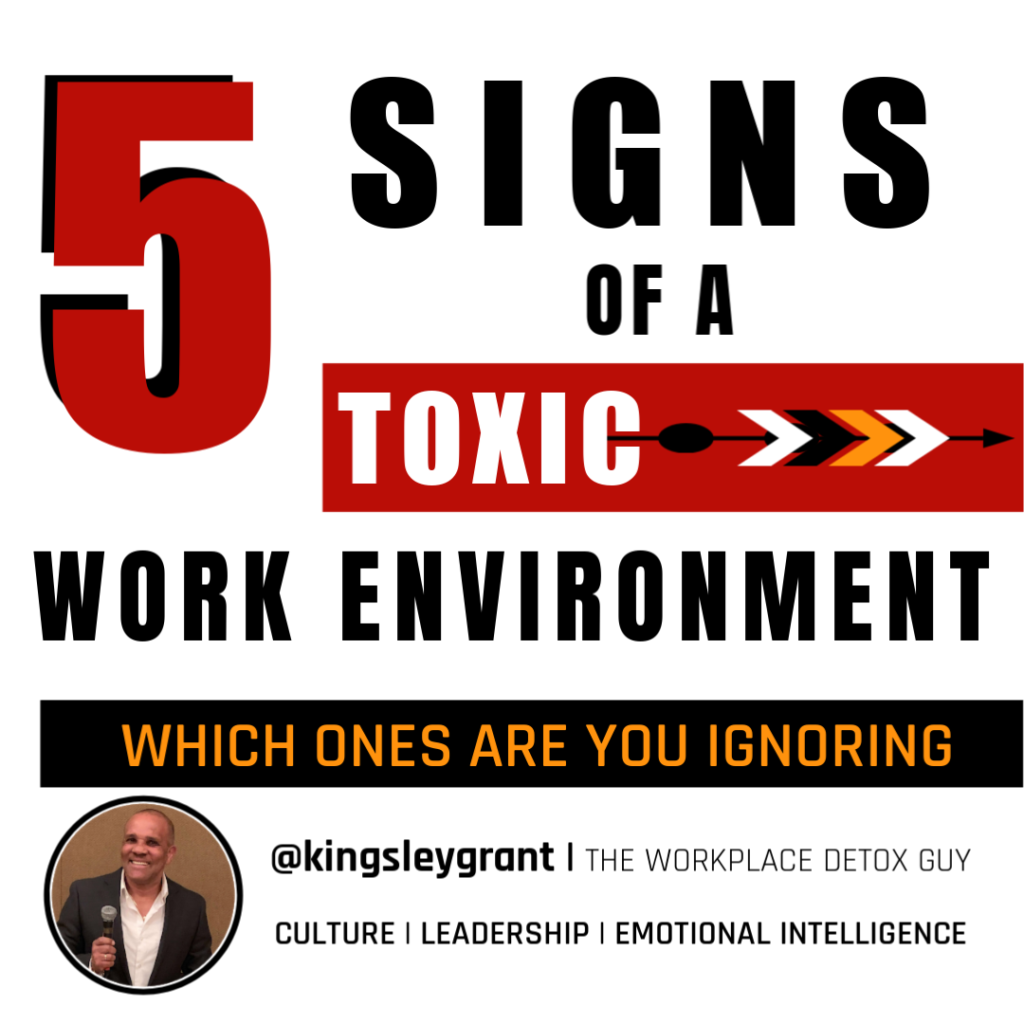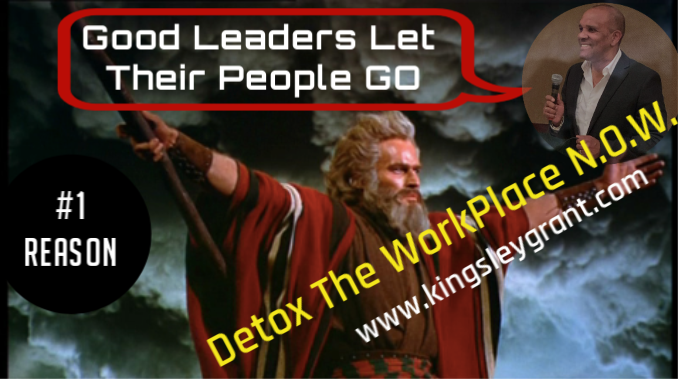When I hear or come across a phrase that has “#1 reason,” I get a bit cynical.
My critical mind becomes activated.
I want to know who determined and made “this,” whatever “this” is, number one (#1)?
Do you have a mind like mine?
If you do, you probably are approaching this article with some cynicism and I wanted to let you know, I understand.
So, what is the #1 reason those good leaders who “let their people go” are poised to be the most successful ones?
Let’s start by asking the question: “let go from what?”
A TOXIC WORK ENVIRONMENT
As you may have guessed, it is from a toxic work environment.
A toxic work environment is one that hinders people from doing great work. Would you agree with that premise?
It’s unhealthy in so many ways.
Imagine, people coming to work and instead of exerting energy on what’s before them, they are more concerned about all that is unhealthy about the workplace.
They are in preservation mode. It’s everyone for themselves and in some cases, creating cliques to find support.
 Recently, I created a PDF on the “5 Signs of a Toxic Work Environment,” in which I outlined the following:
Recently, I created a PDF on the “5 Signs of a Toxic Work Environment,” in which I outlined the following:
- Cliques, Gossip, Rumors
- More Bossing than Leading
- Competition among members
- Favoritism on Display
- Little or no communication
These 5 signs are not an exclusive list. There are so many more. But these somehow categorize most of what happens in a toxic workplace. You may be thinking of others. If so, please comment below. I’d love to see what your list looks like.
Imagine, what the work environment is like when people show up to a toxic workplace.
Let me ask you a few questions:
- Would you be more or less productive in a setting like that?
- Is an organization or a company more likely to make more or less profit at the end of a quarter or year, with an environment like that?
- Are employee’s more engaged, satisfied, healthier, and productive or less engaged, satisfied, healthier, and productive, in environments like that?
Did you get all the answers correct? You should.
So, what is the problem?
Even though it’s a no-brainer, it is this: TOXIC WORK ENVIRONMENT
If that is true, which you and I agree that it is, wouldn’t it make sense that the #1 thing leaders should do, is to find a way or ways, to immediately begin a detox process?
This is what effective and good leaders do. I call them: Emotelligent Leaders based on my book: The Emotelligent Leader – Succeed Where Others Have Failed. (available on Amazon)
When leaders address this problem, this is the result:
UNLEASHING OF THE HUMAN POTENTIAL
When a leader is able to create a safe place – a healthier environment – people will show up to do great work. They will unleash their passion and potential in ways not seen before.
They do this first for themselves. They want to feel good about their work. They want to go home feeling as if they were able to do meaningful work. Who doesn’t?
Who wants to go home feeling defeated, stressed out, overwhelmed, and exhausted simply because of a toxic work environment? No one does.
Yet, hundreds of thousands and even millions of people, do this every day. This is their life.
Is it any wonder people are leaving jobs that they signed up for enthusiastically at first but now can’t wait to get out of.
Is it any wonder so many are experiencing poor health and it’s more from stress than something physical.
Detoxing is not for the faint of heart. It’s gonna take some steps that will require a high degree of emotional intelligence and willingness to take action, which leads me to share my strategy for this to happen.
Here’s the framework that I propose to rapidly get the process started. These 3 steps are critical to the process and are easily remembered with the acronym N.O.W.
Step 1: N-Noticer
In this step the leader, and it has to be THE leader who has the power to make changes, becomes a noticer.
He or she must begin a microscopic sweep of their environment and notice the things that are toxic-related. This may include what others have shared.
Step 2: O-Openminded
Because of the discoveries made from step 1, an open mind approach is required. This might be challenging because some of the discoveries may include the leader making personal changes.
Open-mindedness allows for a free flow of information that is crucial to the detoxifying process.
Step 3: W-Willing
This is the game-changer stage. But of course, you’ll need the first two steps to do this one.
But here is where a leader must be WILLING to take decisive actions. These actions almost always will NOT be comfortable. It may be met with some pushback but there can be no retreat.
These three steps are critical to the detox process.
However, the caveat is that they must be approached with a high degree of emotional intelligence: the ability to recognize and regulate your emotions in such a way to influence a positive outcome.
Detoxing a toxic work environment is the way leaders “let their people go!”
This may all sound easier than it sounds. And it is.
What I find to be most helpful to get the process started is to have someone from the outside who understands this process, to lend a “helping” hand.
This is what I do.
If you are interested or know someone who might be, in having me come alongside to begin this journey, please reach out to me.
Secondly, I love to learn from you. So, would you take a few seconds and leave a comment on any recommendation you have on this topic?
Thirdly, if you found value in this article, please share it with your network.
If becoming this type of leader is something that you want to know more about, connect with me at www.kingsleygrant.com.
Book me to be your speaker at your next event –> www.kingsleygrant.com/speaking





